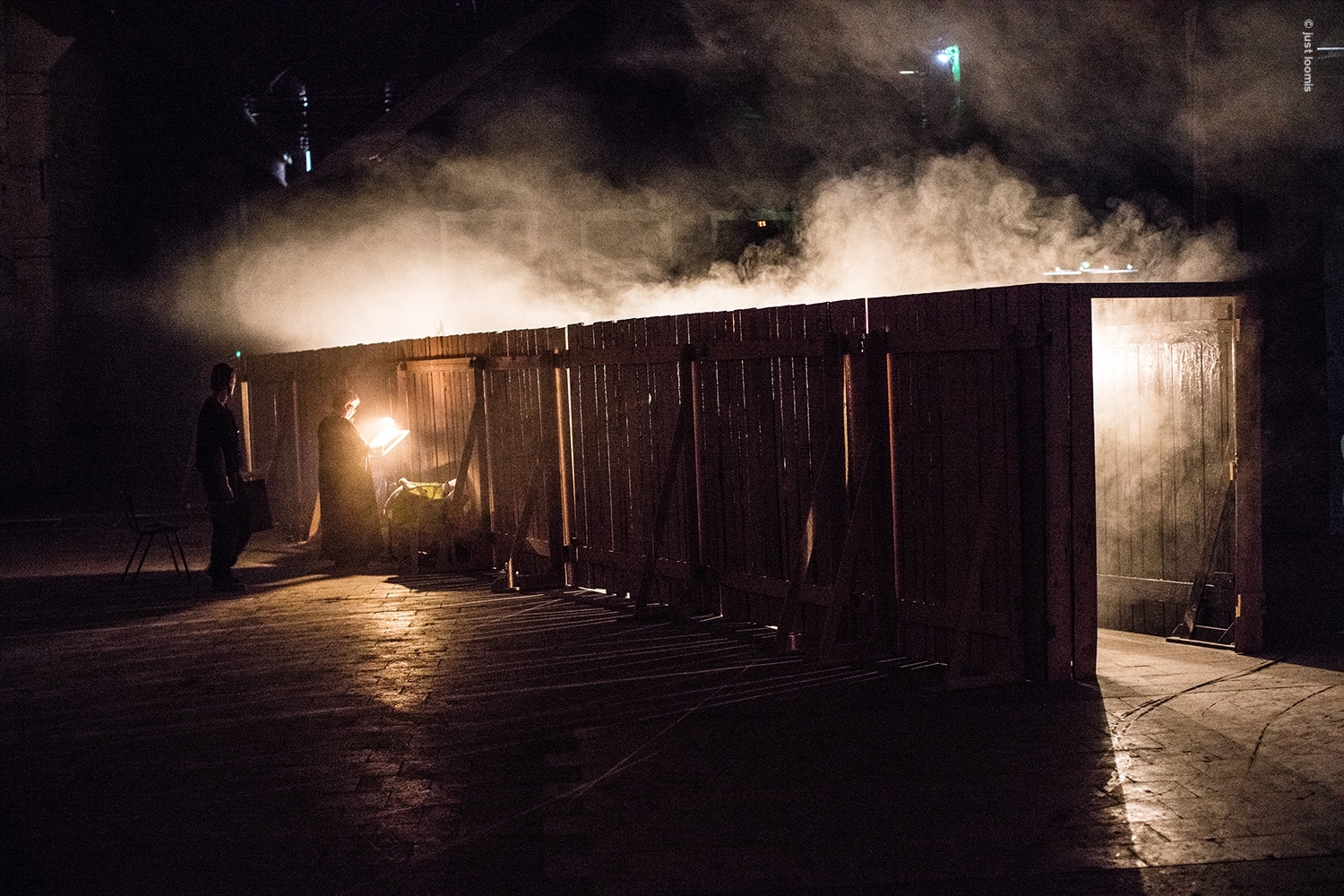


A present-day Horseman of the Apocalypse
Sealing themselves away in a remote castle detached from the world, four wealthy libertines are holding male and female victims captive. The kidnapped are at the command of the powerful men in every respect. Perversions, humiliation, sexual violence and murder are daily fare. Bordering on the arbitrary, the torture intensifies and spirals into the gruesome acts of cruelty, with murders executed painfully slow or unexpectedly, committed by individuals or in league with evil henchmen. The abuse is second to no other form of human barbarity. Only a few victims survive. Sadism at its most extreme is when lust, passion and ecstasy go hand in hand with acts of extinction.
In 1785 Donatien Alphonse François Marquis de Sade, a contemporary of the Enlightenment and zealous bookkeeper of crime and evil giving his name to sadism, wrote „The 120 Days of Sodom” in just 37 days. Using the tiniest writing on rolls of ultra-thin paper, he was hiding the rolls behind the stone walls of his prison cell. De Sade was locked up in goal over long periods several times for his evil ways, ungodliness, for coercion, attempted murder, and the list goes on.
“The 120 Days“ is the bizarre early work of an author bent on mapping an almost mathematical structure onto his prose, starting with the number of persons, meticulously detailed description of rules and prohibitions, house regulations, through to calculated daily routines and orders regulating sexual lust and acts of violation. These painstaking descriptions and categorisations have a philosophical substructure and follow a straightforward dramaturgy that must, with implacable logic, find its climax in one of them rising to become a tyrant and a god, outliving the rest. That’s the ultimate consequence of consequentiality. Not yet with de Sade, though.
It comes to perfection 200 years later with Pier Paolo Pasolini presenting his take on the matter in the film “Salò, or the 120 Days of Sodom” (1975). The film transposes the setting to the year 1944 in Mussolini’s Republic of Salò. The SS is depicted as German elite who join forces with the Italian bourgeoisie to defend their freedom – the freedom to commit every atrocity in the world. It needs rules and order to be able to indulge in destruction and lawlessness within a closed system. Striking elegance and style paired with minimalism stand in stark contrast to efficiently executed crimes: The victim’s agony is followed up with the tormenter’s laughter.
40 years on, director and choreographer Johann Kresnik in collaboration with the artist Gottfried Helnwein take up the subject matter again, now re-scripted by Christoph Klimke to create a dance production for the stage. The fate of the kidnapped young people, abysmal fantasies of violence against children and toddlers, alongside philosophical ruminations about the clergy being the greatest enemy and crime being only natural as inevitable component of the human nature are shocking and trigger deep-seated anxieties in the audience confronted with ruthless violence and monolithic sexual perversions.
Pasolini uses the subject to examine forms of fascism reflected in modern societies. In a similar way, the current production at the Volksbühne seeks to analyse a contemporary, more latent form of terror - the consumer society. Pasolini redescribes terror as enforced conformity and the synchronisation of interests resulting from a loss of autonomy at the level of both social class and territory, in combination with an ongoing ‘optimisation’ of capitalism through the consumer class, whose needs and desires are controlled through the media. This is the production’s point of departure: The pits of hell are full of scat and blood and lethal passions. Money is buying politics, both are busy buying souls. Human beings are reduced to consuming creatures. Needs and desires are generated and fulfilled before they are even articulated. We’re dealing here with stimulation through compulsive buying and shopping frenzies. Consumerist fascism is building up its own system from within, the ideology of money is growing ever deeper roots and the present-day Horseman of the Apocalypse is galloping forward easing to victory.
Duration: 1h 40min
With: Roland Renner (Blangis (Abgeordneter)), Helmut Zhuber (Durcet (Richter)), Enrico Spohn (Curval (Bankier)), Hannes Fischer (Bischof), Ismael Ivo (George (amerikanischer Offizier)), Inka Löwendorf (Hure 1), Ilse Ritter (Rabe/ Hure 2), Sarah Behrendt (Sängerin), Juan Corres Benito (Opfer/ Tanz), Andrew Pan (Opfer/ Tanz), Valentina Schisa (Opfer/ Tanz), Sylvana Seddig (Opfer/ Tanz), Sara Simeoni (Opfer/ Tanz), Osvaldo Ventriglia (Opfer/ Tanz), Elisabetta Violante (Opfer/ Tanz), Yoshiko Waki (Opfer/ Tanz), Günter Cornett (Schergen), Helmut Gerlach (Schergen), Wagner Peixoto Cordeiro (Schergen), Arnd Raeder (Schergen), Christian Schlemmer (Schergen), Leandro Tamos (Schergen), Katia Fellin (Mädchen), Paula Knüpling (Mädchen), Ruby Mai Obermann (Mädchen), Estefania Rodriguez (Mädchen), Nathalie Seiß (Mädchen), Marlon Weber (Mädchen), David Eger (Breakdance), Lukas Steltner (Breakdance) and Lucia Itxaso Kühlmorgen Unzalu (Kind)
Choreography: Ismael Ivo, Johann Kresnik
Director: Johann Kresnik
Libretto: Christoph Klimke
Stage Designer: Gottfried Helnwein
Costumes: Gottfried Helnwein
Music: Ali Helnwein
Light Design: Torsten König
Sound: Jörg Wilkendorf, Gabriel Anschütz
Dramaturgy: Sabine Zielke, Christoph Klimke
The play is not suitable for people under the age of 18.